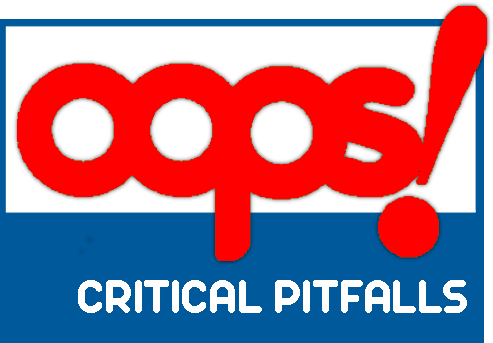Evaluation results
There are three levels of importance in pitfalls according to
their impact on the ontology:
- Critical It is crucial to correct the pitfall. Otherwise, it could affect the ontology consistency, reasoning, applicability, etc.
- Important Though not critical for ontology function, it is important to correct this type of pitfall.
- Minor It is not really a problem, but by correcting it we will make the ontology nicer.
Pitfalls detected:
Ontology elements (classes, object properties and datatype properties) are created isolated, with no relation to the rest of the ontology.
• This pitfall appears in the following elements:
› https://w3id.org/italia/onto/l0/Description
› https://w3id.org/italia/onto/CLV/Identifier
› https://w3id.org/italia/onto/l0/System
› https://w3id.org/italia/onto/TI/TimeInterval
› http://dati.beniculturali.it/cis/Site
› https://w3id.org/italia/onto/l0/Entity
› https://w3id.org/italia/onto/l0/Location
› https://w3id.org/italia/onto/l0/Concept
› https://w3id.org/italia/onto/l0/Characteristic
› https://w3id.org/italia/onto/l0/EventOrSituation
› https://w3id.org/italia/onto/l0/Object
• This pitfall appears in the following elements:
› https://w3id.org/italia/onto/l0/Description
› https://w3id.org/italia/onto/CLV/Identifier
› https://w3id.org/italia/onto/l0/System
› https://w3id.org/italia/onto/TI/TimeInterval
› http://dati.beniculturali.it/cis/Site
› https://w3id.org/italia/onto/l0/Entity
› https://w3id.org/italia/onto/l0/Location
› https://w3id.org/italia/onto/l0/Concept
› https://w3id.org/italia/onto/l0/Characteristic
› https://w3id.org/italia/onto/l0/EventOrSituation
› https://w3id.org/italia/onto/l0/Object
Two relationships are defined as inverse relations when they are not necessarily inverse.
• This pitfall appears in the following elements:
› https://w3id.org/arco/ontology/core/hasCategory may not be inverse of https://w3id.org/arco/ontology/core/isCategoryOf
• This pitfall appears in the following elements:
› https://w3id.org/arco/ontology/core/hasCategory may not be inverse of https://w3id.org/arco/ontology/core/isCategoryOf
A class whose name refers to two or more different concepts is created.
• This pitfall appears in the following elements:
› https://w3id.org/italia/onto/l0/EventOrSituation
› https://w3id.org/arco/ontology/core/EventOrSituation
› https://w3id.org/arco/ontology/core/EventOrSituationInTime
• This pitfall appears in the following elements:
› https://w3id.org/italia/onto/l0/EventOrSituation
› https://w3id.org/arco/ontology/core/EventOrSituation
› https://w3id.org/arco/ontology/core/EventOrSituationInTime
This pitfall consists in creating an ontology element and failing to provide human readable annotations attached to it. Consequently, ontology elements lack annotation properties that label them (e.g. rdfs:label, lemon:LexicalEntry, skos:prefLabel or skos:altLabel) or that define them (e.g. rdfs:comment or dc:description). This pitfall is related to the guidelines provided in [5].
• The following elements have neither rdfs:label or rdfs:comment (nor skos:definition) defined:
› http://dati.beniculturali.it/cis/Site
› https://w3id.org/italia/onto/COV/Organization
› http://dati.gov.it/onto/dcatapit#Agent
› http://dati.gov.it/onto/dcatapit#Organization
› https://w3id.org/italia/onto/l0/Description
› https://w3id.org/italia/onto/l0/EventOrSituation
› https://w3id.org/italia/onto/l0/Location
› https://w3id.org/italia/onto/TI/TimeInterval
› https://w3id.org/italia/onto/TI/TemporalEntity
› https://w3id.org/italia/onto/l0/Characteristic
› https://w3id.org/arco/ontology/natural-specimen-description/Specimen
› https://w3id.org/italia/onto/l0/System
› https://w3id.org/italia/onto/l0/Entity
› http://xmlns.com/foaf/0.1/Agent
› http://dati.beniculturali.it/cis/CulturalEvent
› https://w3id.org/italia/onto/l0/Object
› https://w3id.org/italia/onto/l0/Concept
› https://w3id.org/italia/onto/CLV/Identifier
› https://w3id.org/arco/ontology/denotative-description/Sample
› https://w3id.org/italia/onto/RO/Role
› http://www.w3.org/2006/vcard/ns#Organization
› https://w3id.org/italia/onto/RO/withRole
› https://w3id.org/arco/ontology/natural-specimen-description/isIdentificationInTimeOf
› http://dati.beniculturali.it/cis/isInvolvedInCulturalEvent
› https://w3id.org/italia/onto/RO/forEntity
› https://w3id.org/arco/ontology/natural-specimen-description/isIdentifiedBy
› https://w3id.org/italia/onto/TI/atTime
› https://w3id.org/italia/onto/TI/hasTemporalEntity
› https://w3id.org/italia/onto/RO/isRoleInTimeOf
• The following elements have neither rdfs:comment or skos:definition defined:
› https://w3id.org/arco/ontology/core/Characteristic
• The following elements have neither rdfs:label or rdfs:comment (nor skos:definition) defined:
› http://dati.beniculturali.it/cis/Site
› https://w3id.org/italia/onto/COV/Organization
› http://dati.gov.it/onto/dcatapit#Agent
› http://dati.gov.it/onto/dcatapit#Organization
› https://w3id.org/italia/onto/l0/Description
› https://w3id.org/italia/onto/l0/EventOrSituation
› https://w3id.org/italia/onto/l0/Location
› https://w3id.org/italia/onto/TI/TimeInterval
› https://w3id.org/italia/onto/TI/TemporalEntity
› https://w3id.org/italia/onto/l0/Characteristic
› https://w3id.org/arco/ontology/natural-specimen-description/Specimen
› https://w3id.org/italia/onto/l0/System
› https://w3id.org/italia/onto/l0/Entity
› http://xmlns.com/foaf/0.1/Agent
› http://dati.beniculturali.it/cis/CulturalEvent
› https://w3id.org/italia/onto/l0/Object
› https://w3id.org/italia/onto/l0/Concept
› https://w3id.org/italia/onto/CLV/Identifier
› https://w3id.org/arco/ontology/denotative-description/Sample
› https://w3id.org/italia/onto/RO/Role
› http://www.w3.org/2006/vcard/ns#Organization
› https://w3id.org/italia/onto/RO/withRole
› https://w3id.org/arco/ontology/natural-specimen-description/isIdentificationInTimeOf
› http://dati.beniculturali.it/cis/isInvolvedInCulturalEvent
› https://w3id.org/italia/onto/RO/forEntity
› https://w3id.org/arco/ontology/natural-specimen-description/isIdentifiedBy
› https://w3id.org/italia/onto/TI/atTime
› https://w3id.org/italia/onto/TI/hasTemporalEntity
› https://w3id.org/italia/onto/RO/isRoleInTimeOf
• The following elements have neither rdfs:comment or skos:definition defined:
› https://w3id.org/arco/ontology/core/Characteristic
Object and/or datatype properties without domain or range (or none of them) are included in the ontology.
• This pitfall appears in the following elements:
› https://w3id.org/italia/onto/RO/isRoleInTimeOf
› https://w3id.org/italia/onto/TI/hasTemporalEntity
› https://w3id.org/italia/onto/TI/atTime
› https://w3id.org/arco/ontology/natural-specimen-description/isIdentifiedBy
› https://w3id.org/italia/onto/RO/forEntity
› http://dati.beniculturali.it/cis/isInvolvedInCulturalEvent
› https://w3id.org/arco/ontology/natural-specimen-description/isIdentificationInTimeOf
› https://w3id.org/italia/onto/RO/withRole
• Tip: Solving this pitfall may lead to new results for other pitfalls and suggestions. We encourage you to solve all cases when needed and see what else you can get from OOPS!
• This pitfall appears in the following elements:
› https://w3id.org/italia/onto/RO/isRoleInTimeOf
› https://w3id.org/italia/onto/TI/hasTemporalEntity
› https://w3id.org/italia/onto/TI/atTime
› https://w3id.org/arco/ontology/natural-specimen-description/isIdentifiedBy
› https://w3id.org/italia/onto/RO/forEntity
› http://dati.beniculturali.it/cis/isInvolvedInCulturalEvent
› https://w3id.org/arco/ontology/natural-specimen-description/isIdentificationInTimeOf
› https://w3id.org/italia/onto/RO/withRole
• Tip: Solving this pitfall may lead to new results for other pitfalls and suggestions. We encourage you to solve all cases when needed and see what else you can get from OOPS!
This pitfall appears when any relationship (except for those that are defined as symmetric properties using owl:SymmetricProperty) does not have an inverse relationship (owl:inverseOf) defined within the ontology.
• This pitfall appears in the following elements:
› https://w3id.org/italia/onto/RO/withRole
› https://w3id.org/arco/ontology/natural-specimen-description/isIdentificationInTimeOf
› http://dati.beniculturali.it/cis/isInvolvedInCulturalEvent
› https://w3id.org/arco/ontology/core/hasDirectLowerRank
› https://w3id.org/italia/onto/RO/forEntity
› https://w3id.org/italia/onto/TI/atTime
› https://w3id.org/italia/onto/TI/hasTemporalEntity
› https://w3id.org/italia/onto/RO/isRoleInTimeOf
• This pitfall appears in the following elements:
› https://w3id.org/italia/onto/RO/withRole
› https://w3id.org/arco/ontology/natural-specimen-description/isIdentificationInTimeOf
› http://dati.beniculturali.it/cis/isInvolvedInCulturalEvent
› https://w3id.org/arco/ontology/core/hasDirectLowerRank
› https://w3id.org/italia/onto/RO/forEntity
› https://w3id.org/italia/onto/TI/atTime
› https://w3id.org/italia/onto/TI/hasTemporalEntity
› https://w3id.org/italia/onto/RO/isRoleInTimeOf
An ontology element (a class, an object property or a datatype property) is used in its own definition. Some examples of this would be: (a) the definition of a class as the enumeration of several classes including itself; (b) the appearance of a class within its owl:equivalentClass or rdfs:subClassOf axioms; (c) the appearance of an object property in its rdfs:domain or range rdfs:range definitions; or (d) the appearance of a datatype property in its rdfs:domain definition.
• This pitfall appears in the following elements:
› https://w3id.org/arco/ontology/core/hasDirectHigherRank
• This pitfall appears in the following elements:
› https://w3id.org/arco/ontology/core/hasDirectHigherRank
A relationship is defined as inverse of itself. In this case, this relationship could have been defined as owl:SymmetricProperty instead.
• This pitfall appears in the following elements:
› https://w3id.org/arco/ontology/core/hasDirectHigherRank
• This pitfall appears in the following elements:
› https://w3id.org/arco/ontology/core/hasDirectHigherRank
This pitfall consists in missing the definition of equivalent classes (owl:equivalentClass) in case of duplicated concepts. When an ontology reuses terms from other ontologies, classes that have the same meaning should be defined as equivalent in order to benefit the interoperability between both ontologies.
• The following classes might be equivalent:
› https://w3id.org/arco/ontology/core/Situation, http://dati.beniculturali.it/cis/Site
› http://dati.gov.it/onto/dcatapit#Organization, https://w3id.org/italia/onto/COV/Organization, http://www.w3.org/2006/vcard/ns#Organization, https://w3id.org/arco/ontology/core/System, https://w3id.org/italia/onto/l0/System
• The following classes might be equivalent:
› https://w3id.org/arco/ontology/core/Situation, http://dati.beniculturali.it/cis/Site
› http://dati.gov.it/onto/dcatapit#Organization, https://w3id.org/italia/onto/COV/Organization, http://www.w3.org/2006/vcard/ns#Organization, https://w3id.org/arco/ontology/core/System, https://w3id.org/italia/onto/l0/System
An ontology element is used as a property without having been explicitly declared as such using the primitives rdf:Property, owl:ObjectProperty or owl:DatatypeProperty. This pitfall is related with the common problems listed in [8].
• This pitfall appears in the following elements:
› https://w3id.org/italia/onto/l0/identifier
• This pitfall appears in the following elements:
› https://w3id.org/italia/onto/l0/identifier
Suggestions or warnings:
The domain and range axioms are equal for each of the following object properties. Could they be symmetric or transitive?
› | https://w3id.org/arco/ontology/core/hasConsequence
› | https://w3id.org/arco/ontology/core/hasTopic
› | https://w3id.org/arco/ontology/core/describes
› | https://w3id.org/arco/ontology/core/hasDirectHigherRank
› | https://w3id.org/arco/ontology/core/hasComponent
› | https://w3id.org/arco/ontology/core/hasDirectLowerRank
› | https://w3id.org/arco/ontology/core/isConstituentOf
› | https://w3id.org/arco/ontology/core/isDescribedBy
› | https://w3id.org/arco/ontology/core/hasConstituent
› | https://w3id.org/arco/ontology/core/isConsequenceOf
› | https://w3id.org/arco/ontology/core/hasLowerRank
› | https://w3id.org/arco/ontology/core/hasHigherRank
› | https://w3id.org/arco/ontology/core/isTopicOf
› | https://w3id.org/arco/ontology/core/isComponentOf
› | https://w3id.org/arco/ontology/core/hasConsequence
› | https://w3id.org/arco/ontology/core/hasTopic
› | https://w3id.org/arco/ontology/core/describes
› | https://w3id.org/arco/ontology/core/hasDirectHigherRank
› | https://w3id.org/arco/ontology/core/hasComponent
› | https://w3id.org/arco/ontology/core/hasDirectLowerRank
› | https://w3id.org/arco/ontology/core/isConstituentOf
› | https://w3id.org/arco/ontology/core/isDescribedBy
› | https://w3id.org/arco/ontology/core/hasConstituent
› | https://w3id.org/arco/ontology/core/isConsequenceOf
› | https://w3id.org/arco/ontology/core/hasLowerRank
› | https://w3id.org/arco/ontology/core/hasHigherRank
› | https://w3id.org/arco/ontology/core/isTopicOf
› | https://w3id.org/arco/ontology/core/isComponentOf
According to the highest importance level of pitfall found in your ontology the conformace bagde suggested is "Critical pitfalls" (see below). You can use the following HTML code to insert the badge within your ontology documentation:
References
Lexicalizing Ontologies: The issues behind the labels. In Multimodal communication in the 21st century: Professional and academic challenges. 33rd Conference of the Spanish Association of Applied Linguistics (AESLA), XXXIII AESLA.
Ontology development 101: A guide to creating your first ontology.
Evaluation of Taxonomic Knowledge in Ontologies and Knowledge Bases. Proceedings of the Banff Knowledge Acquisition for Knowledge-Based Systems Workshop. Alberta, Canada.
Style guidelines for naming and labeling ontologies in the multilingual web.
Ontology Evaluation. PhD thesis.
Ontology evaluation. In Handbook on ontologies, pages 251-273. Springer.
Owl pizzas: Practical experience of teaching owl-dl: Common errors & common patterns. In Engineering Knowledge in the Age of the Semantic Web, pages 63-81. Springer.
Weaving the pedantic web. In Proceedings of the WWW2010 Workshop on Linked Data on the Web, LDOW 2010, Raleigh, USA, April 27, 2010.
D7. 1.3-study on persistent URIs, with identification of best practices and recommendations on the topic for the Mss and the EC. PwC EU Services.
“Linked Data - Design issues”. http://www.w3.org/DesignIssues/LinkedData.html
Linked Data: Evolving the Web into a Global Data Space. Morgan & Claypool, 1st edition.
Is your linked data vocabulary 5-star?. http://bvatant.blogspot.fr/2012/02/is-your-linked-data-vocabulary-5-star_9588.html
Enter your ontology to scan:




